History made, millions saved: One year later, 'surreal' moments of COVID-19 vaccine debut live on
DETROIT – Nancy Galloway remembers it all. How she stood with her friend Susan Deur for hours in the 35-degree chill before the sun came up outside Pfizer's manufacturing site in Portage, Michigan.
She didn't mind the early hour or how cold it was that December morning a year ago because she was a witness to history.
Galloway's eyes filled with tears as she watched the caravan of semitrucks – led and tailed by unmarked police cars – leave the plant, filled with the promise of the nation's first COVID-19 vaccines amid a pandemic that had killed so many.
"It was surreal. "Still to this day, we talk about how exciting it was," said Galloway, 64, who lives in Plainwell, about 20 minutes north of the Pfizer manufacturing site. "When we first saw those trucks roll out, we were in tears, you know? Crying. It was great."
She was among millions who wept, cheered and prayed one year ago as the first doses of vaccine to slay the coronavirus rolled out of the plant on Dec. 13, 2020, destined for arms and the promise of ending the pandemic.
It was a difficult time in American history. COVID-19 had killed more than 300,000. Hospitals brimming with patients had to turn the sick away. Mortuaries overflowed. Much of the nation was on lockdown, and the outlook for Christmas was bleak.
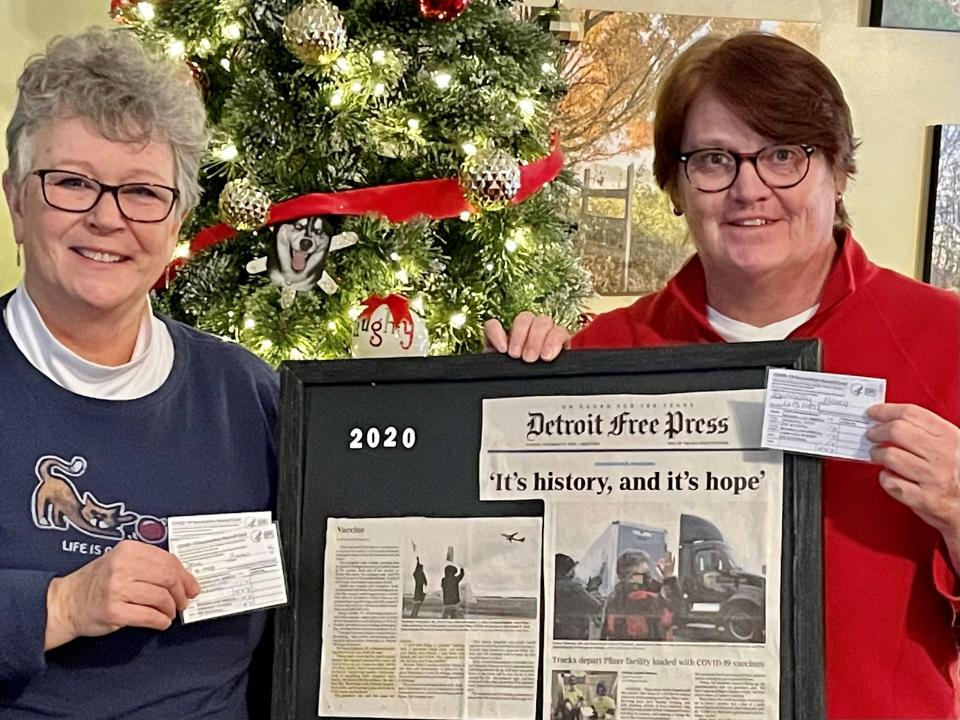
Then came that remarkable moment of hope, one perhaps unequaled since the polio vaccine was released in 1955.
In just 11 months, a vaccine had been created to fight a newfound human scourge. It was the fastest ever created, beating out the vaccine for mumps, which took four years.
“I had tears in my eyes” watching the trucks roll, said Dr. Gregory Poland, director of the Mayo Clinic's Vaccine Research Group.
The Trump administration had pulled off what no one thought possible.
“Operation Warp Speed was a bold initiative – and it worked,” said Poland, editor-in-chief of the journal Vaccine. “For 40 years, I’ve labored in the trenches of vaccinology. I’ve been on every single U.S. vaccine committee there is. I had never seen something like this happen.”
The remarkable $10 billion bet, and the decades of painstaking biomedical research that came before it, paid off.
As of this week, more than 237 million Americans have received at least one dose of a COVID-19 vaccine and 60.5% of the population is fully vaccinated, according to the Centers for Disease Control and Prevention.
The vaccine has been “a gift,” said Dr. Warner Greene, a virologist at the Gladstone Institutes in San Francisco.
“I do not believe that I'm going to die of this coronavirus. I don't believe my family will die of this coronavirus because they've all been vaccinated,” Greene said. “That just changes my whole perspective.”
The first shots
The first doses arrived on hospital loading docks in the early hours of Monday, Dec. 14. The heavily insulated boxes full of dry ice, about the size of a dorm fridge, were quickly whisked to ultra-cold freezers where the precious vials were stored.
The first formulation of the vaccine had very specific, and finicky, storage requirements. It had to be kept between 76 and 130 degrees below zero, then carefully thawed and diluted. Even the mixing requirements were delicate and precise.
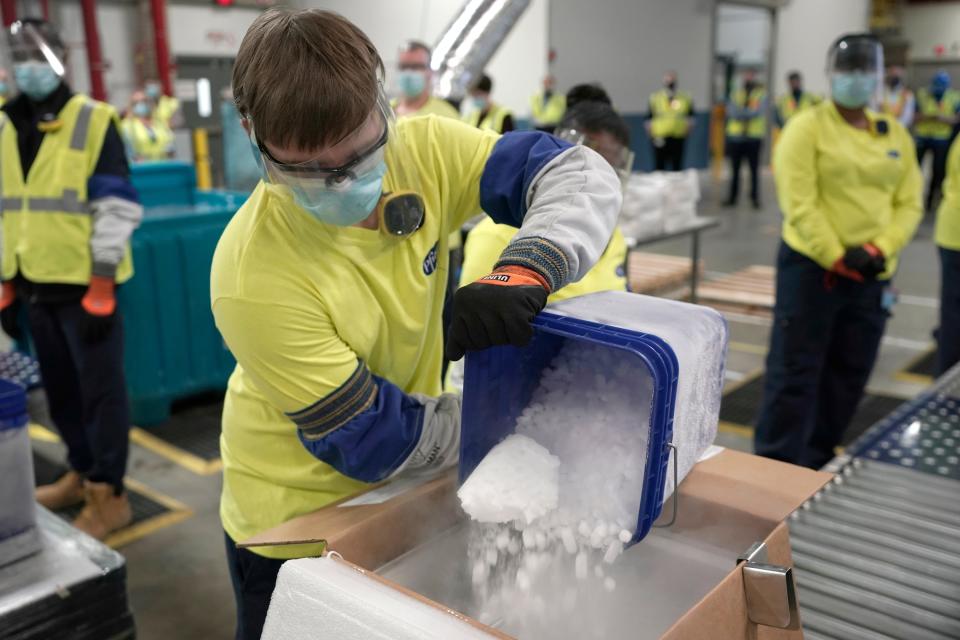
“You couldn’t shake it. You just had to gently invert it 10 times,” said Dr. Kelly Moore, president of Immunize.org, which educates providers about vaccines.
No one complained. The lifesaving liquid was “a shot of hope,” in the words of Sandra Lindsay, director of critical care nursing at Long Island Jewish Medical Center in New York.
Lindsay was likely the first person in the United States to get the newly authorized COVID-19 vaccine.
“That morning I woke up early, I just couldn't wait to get on-site where the vaccine was being offered,” she said. “When that shot, that needle, pierced my arm, I just felt like a boulder just rolled off my shoulders.”
Lindsay and her colleagues had been in the trenches for many months, caring for the severely ill with limited treatments and helplessly watching people die, as they tried to stay safe themselves.
The day the vaccine arrived was one of joy.
“Some people had moved out of their homes to protect their family. They felt like they could move back in again. We could have a good Christmas. I could hug my kids again," Lindsay said. "I could come into work and not feel that anxiety and fear.”
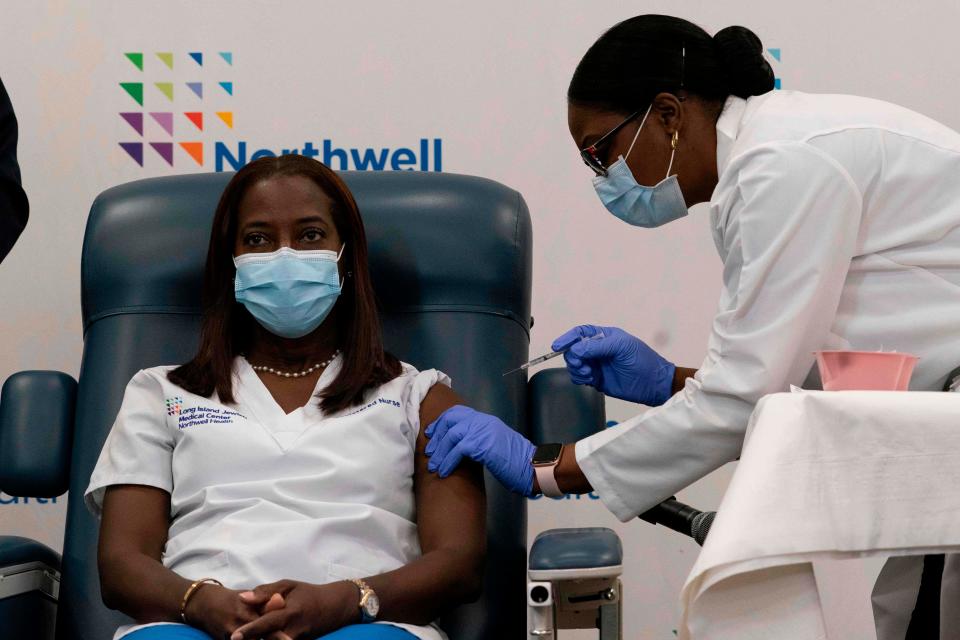
In Los Angeles, Dr. Brian Thompson was one of the first on the West Coast to be vaccinated that morning. He felt profoundly honored.
“I remember thinking, ‘This is a major point in history to be a part of,’” said Thompson, an emergency room physician with Kaiser Permanente. “The scientific community had created a means to beat a disease that could wipe out a large part of humanity. It was very, very overwhelming.”
Even the people giving the shots cried.
Dr. Rebecca Weintraub watched the nurses, physicians and respiratory therapists at Brigham and Women’s Hospital in Boston work night shift after night shift, putting their own lives at risk caring for patients.
“It was an absolute privilege as a provider to be able to offer that immunity to my colleagues," recalled Weintraub, who delivered some of the first shots.
A dream realized
For many who work in the field of immunology and infectious diseases, the realization that humanity had a chance against the virus came a few months earlier, when results came in from final-stage clinical trials of the Pfizer-BioNTech vaccine.
“I remember it was a Sunday night,” said Dr. Anthony Fauci, the nation’s top infectious disease physician.
He got a call from Albert Bourla, CEO of Pfizer, telling him the trial results were far better than anyone had expected. The vaccine was 95% effective.
Fauci said he knew at that moment it would save millions of people.
“It's very difficult to explain the emotion associated with that,” he said.
He wasn’t the only one astounded by the protection the new vaccine offered.
When Moore first got a look at the Pfizer-BioNTech data, one graph leaped out. It showed two jagged lines snaking across the page. One rose inexorably. The other started flat and stayed flat.
The first line showed people in Pfizer’s vaccine study who’d gotten a placebo. They kept getting COVID-19. The other line, the one that stayed low and flat, showed the people who’d been given the actual vaccine. Almost none got sick.
The graph revealed how staggeringly well the vaccine worked. It floored her.
“I just kept thinking, ‘This is so much better than we ever dreamed,’” Moore said. “I wanted to either get a poster for my wall or maybe a tattoo!”
The day the vaccines were shipped out, the Rev. Arielphilip Flores sat with his two children at bedtime. Together, they offered prayers in Thanksgiving.
“After I put them to sleep, I turned on the television and I was watching the trucks roll out and calculating how long it would take to get to Los Angeles,” said Flores, a chaplain at Ronald Reagan UCLA Medical Center.
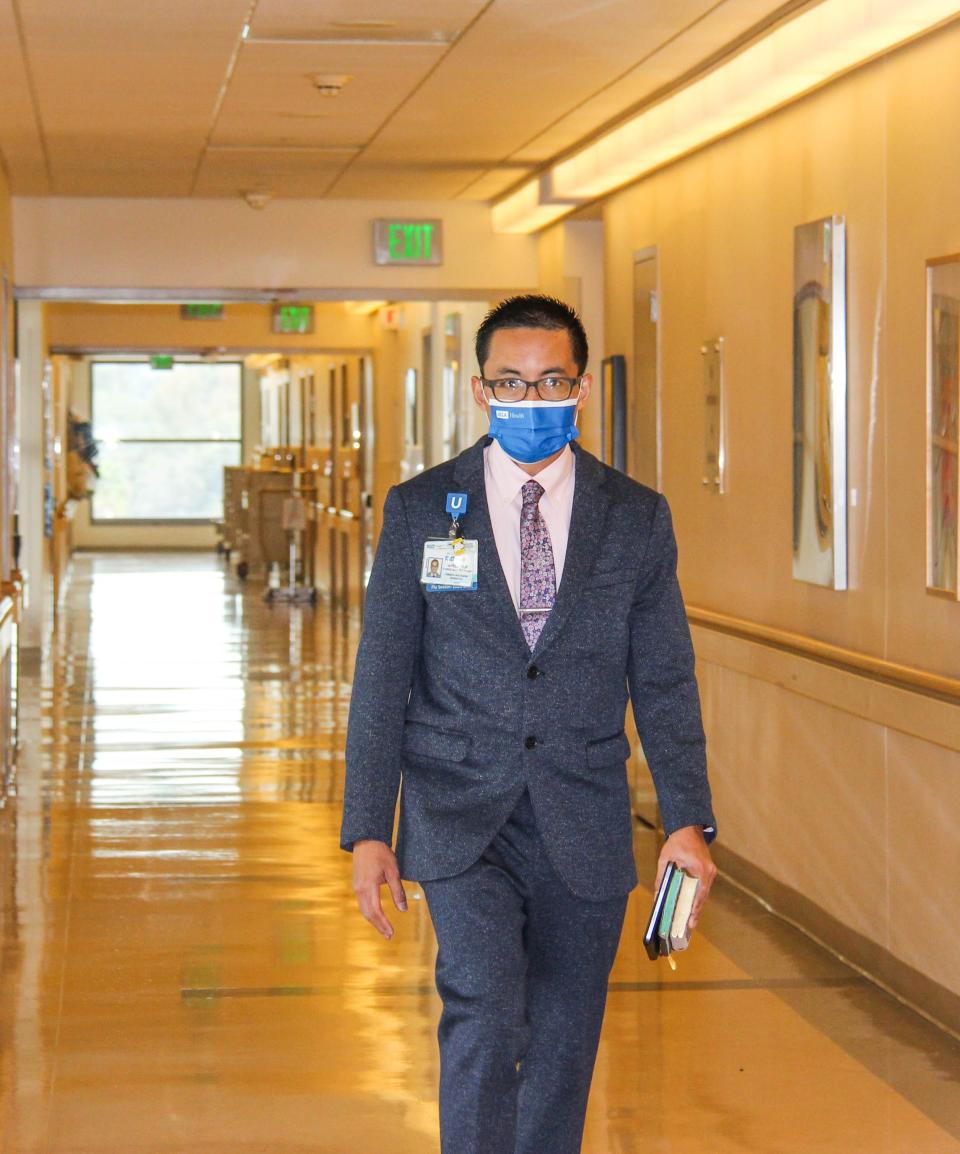
The next day when he went into work, he saw rows and rows of chairs full of employees. They'd been there since 6 a.m. waiting for their shots.
As he walked through, several asked him to stop and pray with them, for peace and healing.
“That day is etched into my memory," he said. "I’m still grateful to God for it.”
Lost chances
The joy and rejoicing of those early days of the vaccine rollout stand in stark contrast to the vaccine hesitancy and misinformation that has taken hold among some in the country.
The turn surprised Thompson. As a Black physician, he expected some distrust in his community because of the nation’s long history of racism in medicine.
“I didn’t anticipate so many people not of color opposing it on the grounds that it’s their right as a human being. Why would you want the right to die? It defies logic,” he said.
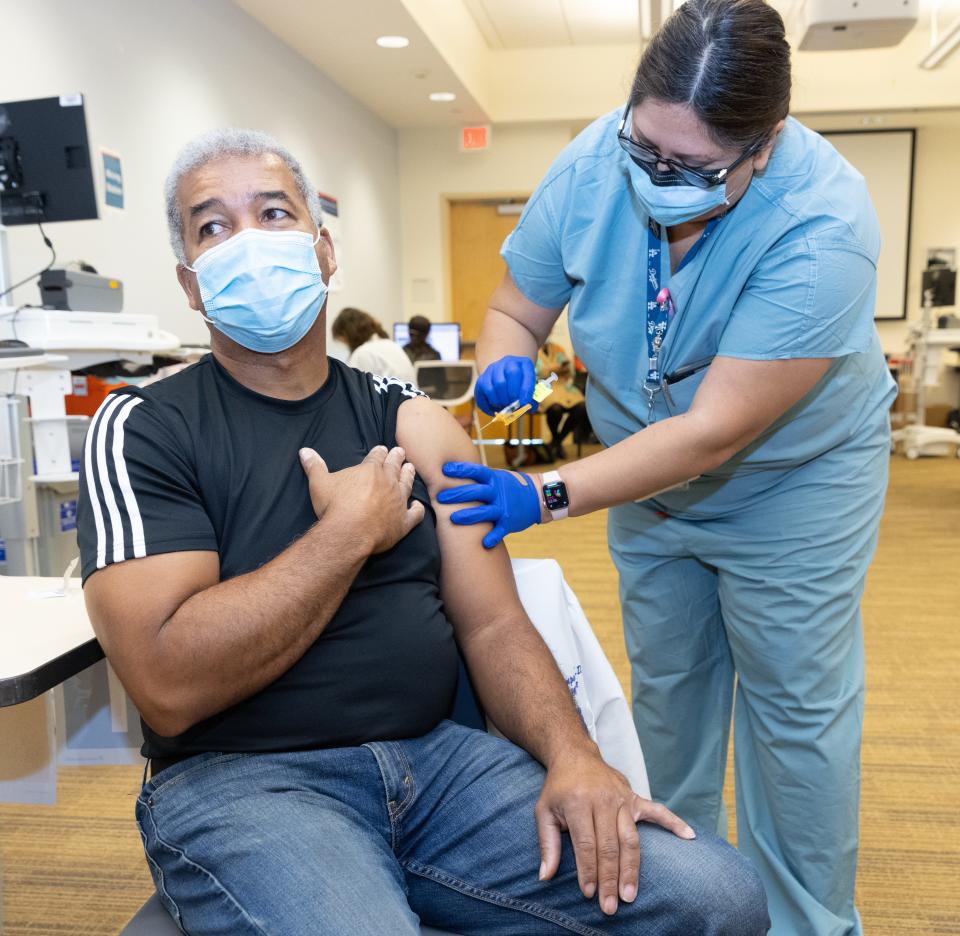
Physician Paul Offit has spent the pandemic caring for children at Philadelphia Children’s Hospital. He helped create the vaccine against rotavirus, which once killed more than 2,000 children a day around the globe.
It has been a huge disappointment to him that people have died from COVID-19 because they won’t get immunized. About 1,200 Americans a day are still dying of COVID-19, according to Johns Hopkins University, and the death toll was expected to top 800,000 in the coming days.
Working the wards of his hospital at the beginning of this month, Offit said, "Of all the COVID patients we admitted who were 12 and over, not one of them was vaccinated. And their parents weren’t vaccinated either.”
Seeing the needless suffering “is just so hard,” he said. “I always imagined that if there was this sort of pandemic a vaccine would be our ticket out."
The Kaiser Family Foundation estimates if all eligible adults were to have been vaccinated between June and the end of November, more than 163,000 Americans who died of COVID-19 would still be alive.
Denny La Point, 75, lives near Pfizer’s Michigan plant. He recalls standing outside it with his camera the morning the trucks rolled out with the first doses, eager to document hope on wheels. Two months later, when he was eligible for his first dose, La Point rolled up his sleeve for his first shot of the hometown vaccine at the Kalamazoo County Expo Center.
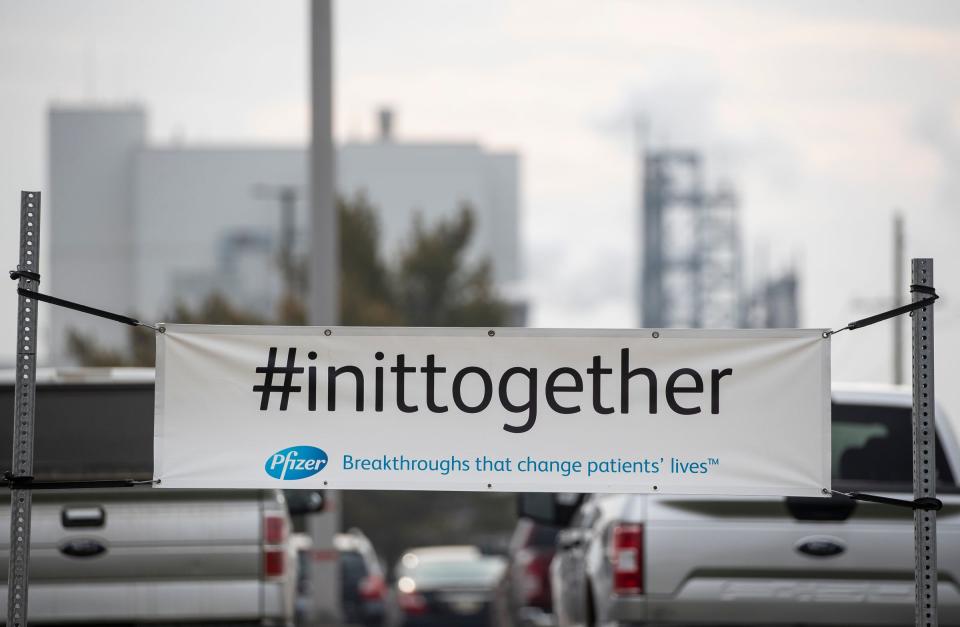
But the fierce pride many of his neighbors felt for the vaccine has taken a hit these last 12 months. Politics and misinformation have fueled anti-vaccine sentiment, he said, even among his own relatives.
“I'm disappointed in the number of people that haven't gotten it,” he said. “I think they're just prolonging the pandemic.”
Galloway, and her friend Deur, are more than ready for it to be over. A year after braving the cold to witness history, they are looking forward to a normal Christmas.
They got their first doses of vaccine at a drive-thru clinic in March at Kalamazoo Central High School and have stayed healthy since.
"We spent last Christmas outside, in my sister's garage. They brought out heaters and stuff," Deur, 63, said. "We're not doing that this year."
Once they were fully vaccinated, Galloway and Deur slowly mustered the courage to do things they hadn't done in a year – dine in restaurants, get together with friends. After getting boosted, Deur let go of pandemic angst.
"I'm actually quite sick of the fear," she said. "I made the conscious decision just after I got the booster that I can't live in fear anymore."
Contributing: Karen Weintraub
Contact Elizabeth Weise at eweise@usatoday.com.
Contact Kristen Shamus: kshamus@freepress.com. Follow her on Twitter @kristenshamus.
This article originally appeared on USA TODAY: History made, millions saved: One-year anniversary of COVID-19 vaccine

